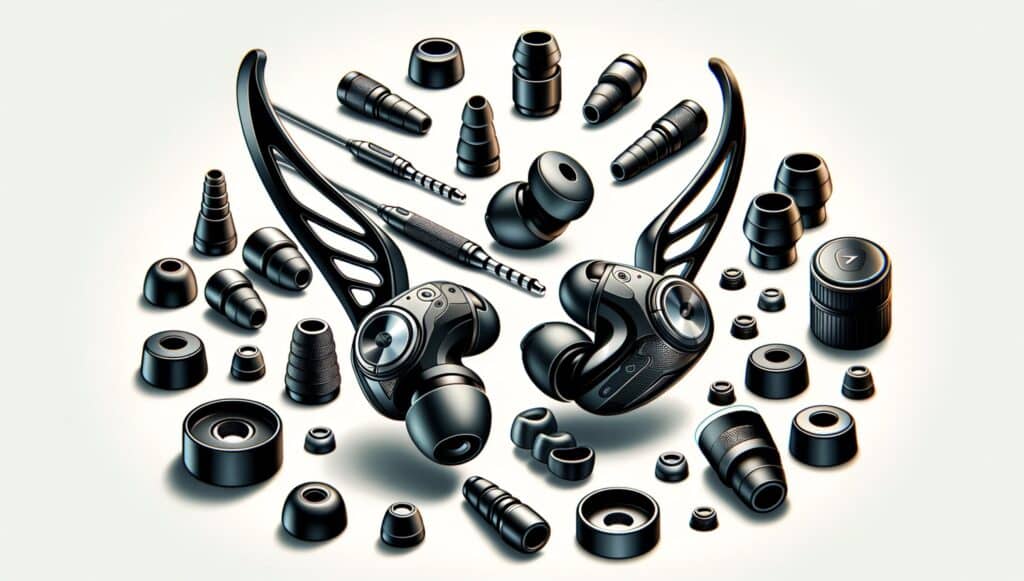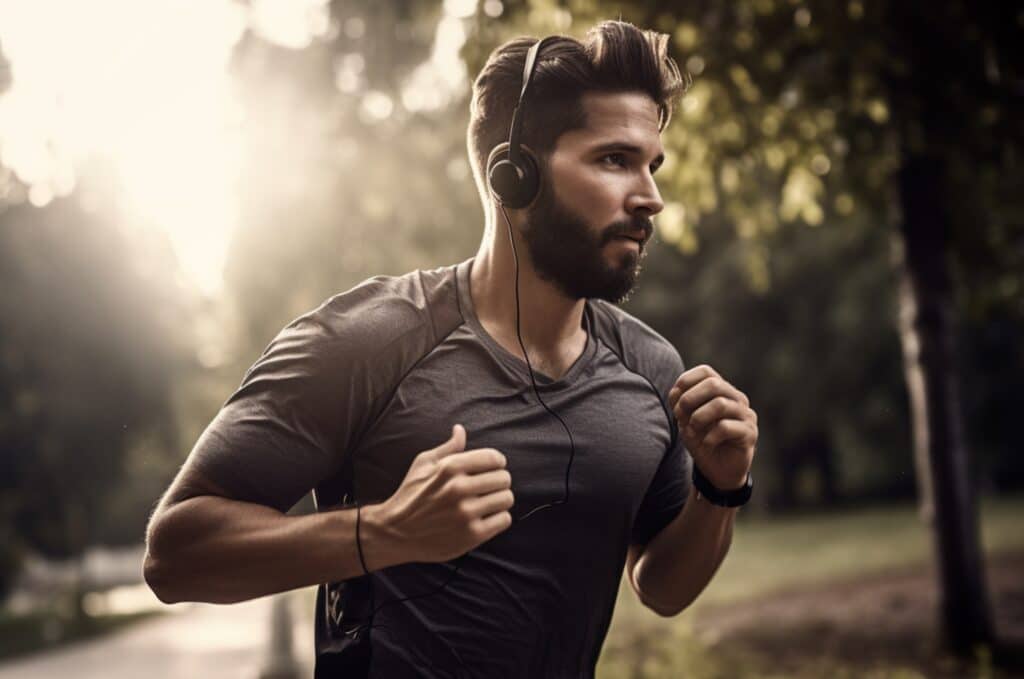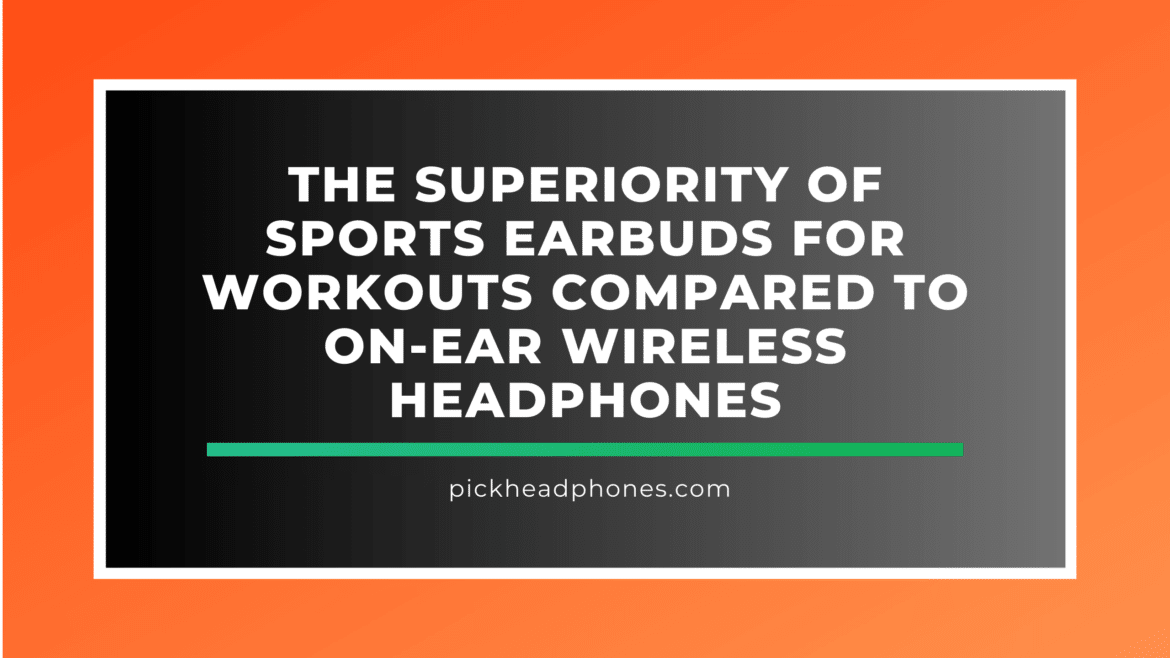In the realm of fitness and exercise, the right gear can make a significant difference in both performance and experience. A crucial component of this gear, often overlooked, is the choice of headphones. In this comprehensive article, we delve into why sports earbuds are increasingly favored over on-ear wireless headphones for workouts. We’ll explore each aspect in detail, supporting our points with facts and adding tables for a clearer understanding.

Compact Size and Lightweight Design
Sports Earbuds: The compact nature of sports earbuds is a primary advantage. Weighing just a few grams, they offer a barely-there feel, ideal for prolonged workout sessions.
On-Ear Wireless Headphones: In contrast, on-ear headphones are bulkier, which can lead to discomfort or neck strain over extended periods of exercise.
Table 1: Size and Weight Comparison
Secure and Comfortable Fit
Sports Earbuds: They often come with customizable tips and winged designs that ensure a secure fit, minimizing the risk of falling out during vigorous movements.
On-Ear Wireless Headphones: The risk of slippage is higher, especially during high-impact activities.
Table 2: Fit and Security
| Feature | Sports Earbuds | On-Ear Wireless Headphones |
|---|---|---|
| Stability | High (secure fit) | Moderate (can slip off) |
| Customizability | High (varied tips) | Low |
Durability: Sweat and Water Resistance

Sports Earbuds: They are typically designed to withstand sweat and moisture, a crucial feature for any workout headphone.
On-Ear Wireless Headphones: Not all models are sweat or water-resistant, which can limit their lifespan in a fitness setting.
Table 3: Durability Comparison
| Feature | Sports Earbuds | On-Ear Wireless Headphones |
|---|---|---|
| Sweat Resistance | High | Variable |
| Water Resistance | Often present | Rarely present |
Superior Noise Isolation
Sports Earbuds: The in-ear design allows for better noise isolation, helping you focus on your workout without external distractions.
On-Ear Wireless Headphones: While some offer good noise isolation, they might not match the level of earbuds.
Table 4: Noise Isolation Effectiveness
| Feature | Sports Earbuds | On-Ear Wireless Headphones |
|---|---|---|
| Noise Isolation | High | Moderate |
Reduced Heat Build-up

Sports Earbuds: Earbuds allow for air circulation, reducing the likelihood of ears becoming overly warm and sweaty.
On-Ear Wireless Headphones: They can cause ears to heat up, which might be uncomfortable during intense workouts.
Table 5: Heat Build-up Comparison
| Feature | Sports Earbuds | On-Ear Wireless Headphones |
|---|---|---|
| Heat Build-up | Low | High |
Ease of Movement and Practicality
Sports Earbuds: Their small size and fit mean they don’t interfere with physical movements or exercise equipment.
On-Ear Wireless Headphones: Can be cumbersome and may get in the way during certain exercises.
Table 6: Movement and Practicality
| Feature | Sports Earbuds | On-Ear Wireless Headphones |
|---|---|---|
| Interference in Movement | None | Possible |
Advanced Health and Fitness Features
Sports Earbuds: Some models come equipped with built-in fitness trackers and heart rate monitors, adding value to your workout routine.
On-Ear Wireless Headphones: Such features are less common in on-ear models.
Table 7: Health and Fitness Features
| Feature | Sports Earbuds | On-Ear Wireless Headphones |
|---|---|---|
| Fitness Tracking | Often present | Rarely present |

In conclusion, while on-ear wireless headphones have their merits, sports earbuds stand out as the superior choice for workouts due to their compact size, secure fit, enhanced durability, effective noise isolation, minimal heat build-up, ease of movement, and advanced health and fitness features. This comprehensive analysis showcases the practicality and efficiency of sports earbuds in a fitness setting, making them an ideal choice for athletes and fitness enthusiasts alike.
